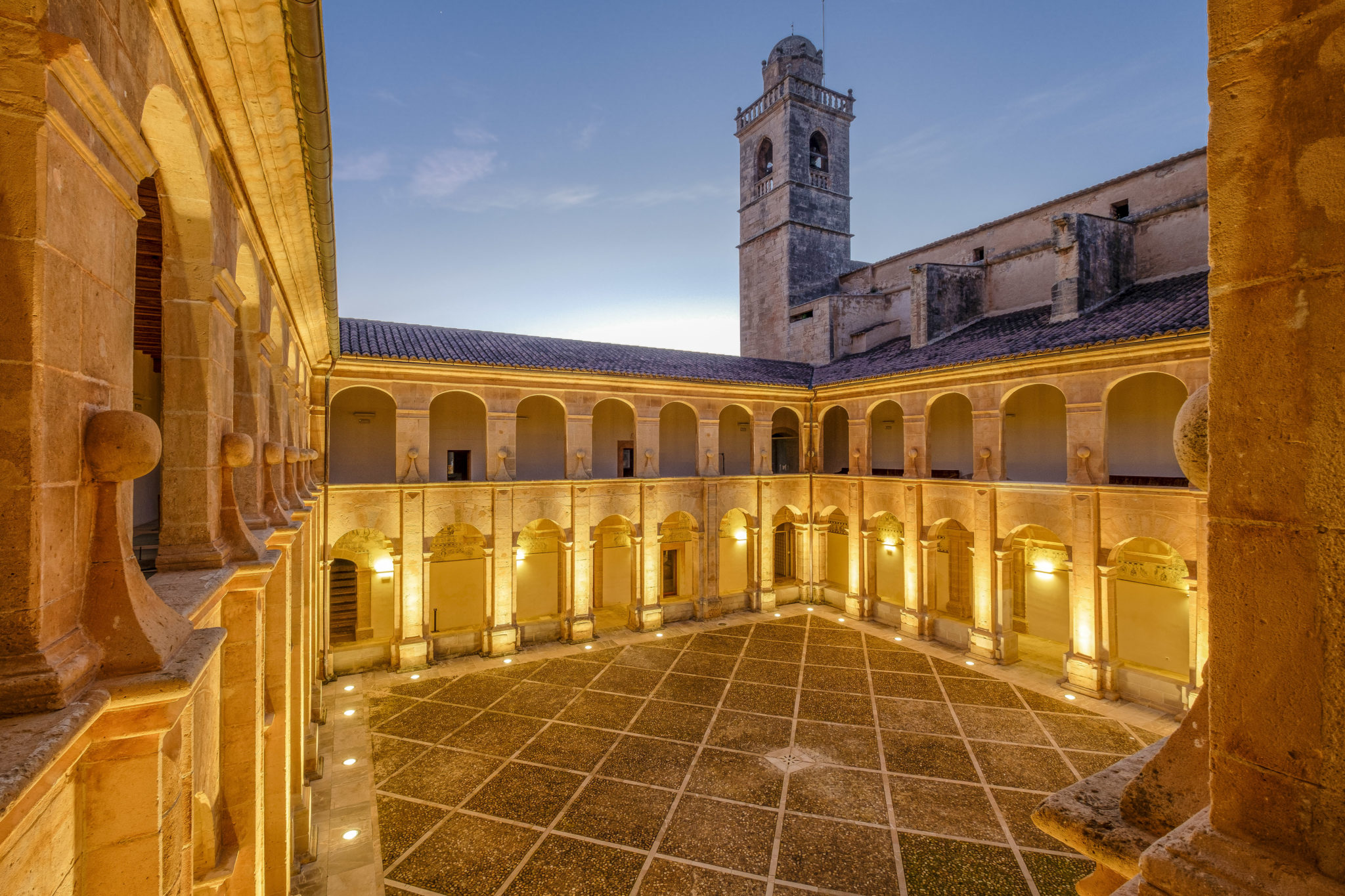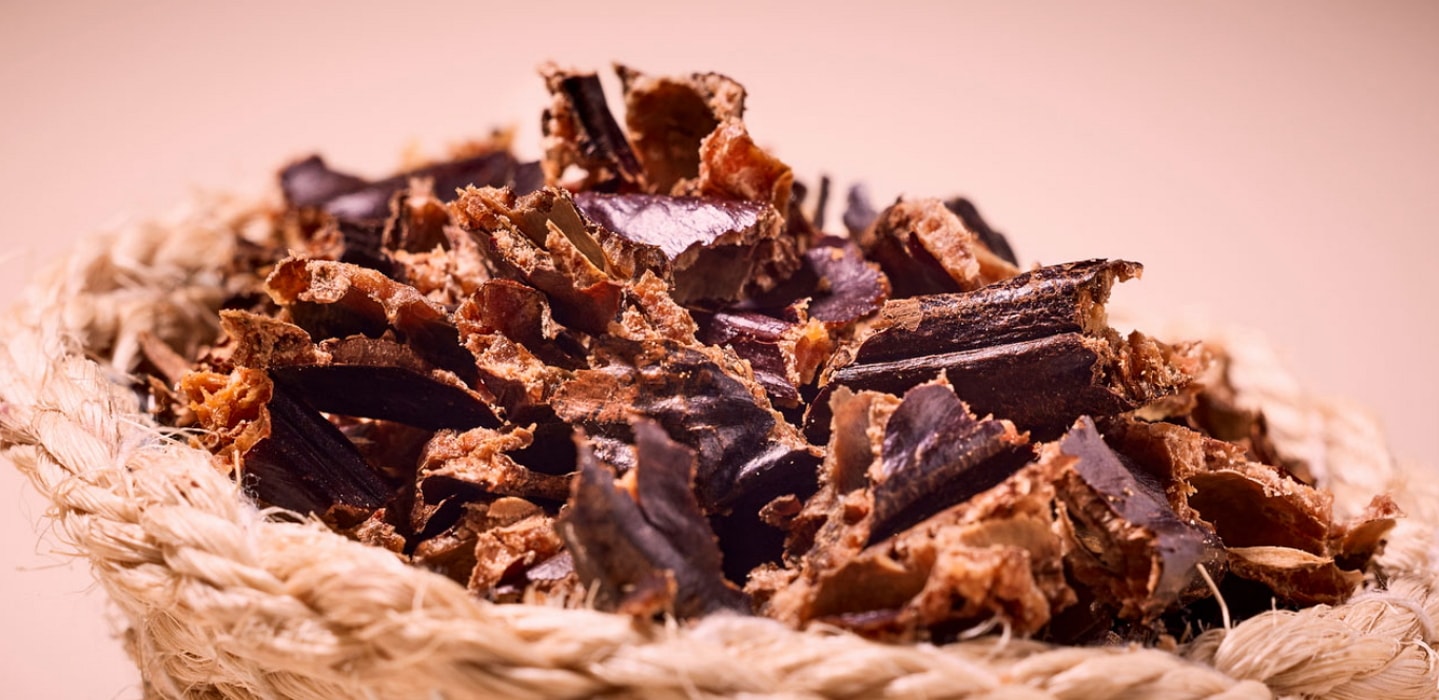On 3 June 1608, the Franciscans moved to this site after having lived in a house in Carrer Monestir since 1599, and the definitive convent was built during the 17th century and consisted of the church, the cloister, small outbuildings and the orchard. On 29 October 1656, the church was blessed by Friar Pere Roig i Noguera.
The internal spaces of the convent, cells, offices, workshops, refectory, kitchen, porter’s lodge, library, toilets, chapter house or meeting room, were distributed around the cloister. The lower floor was completed around 1670 and the upper floor around 1697. It follows the Baroque cloister typology of the Franciscans: it has a square floor plan with a double superimposed gallery of semicircular arches. The lower gallery is covered with a mirrored vault, while the upper one is covered with beams.
The convent was occupied by the Franciscan order until the confiscation of Mendizábal on 10 March 1836. From that time until 1998, when the Guardia Civil definitively abandoned the cloister and its annexes, the complex was the barracks of the Guardia Civil, the Justice of the Peace and the Municipal Slaughterhouse. In 1999, the project for the restoration and recovery of the building, which was declared an Asset of Cultural Interest on 23 August 2002, was forged. The restoration work began on 28 April 2006, the day on which the symbolic act of laying the first stone was celebrated. The inauguration of the cloister took place on 27 June 2007.
THE WALL PAINTINGS
The paintings in the corridor on the ground floor are all monochrome and are executed using the grisaille technique (degradation of grey colours). They are a unitary cycle made up of Franciscan saints and blessed, perfectly identified by a distinctive band-shaped cartouche. These paintings were executed at the end of the 17th century or beginning of the 18th century, that is, shortly after the cloister was completed in 1697. The cloister of Sant Bonaventura is the only one in Spain and one of the few in Europe where this type of painting is conserved in a good state of conservation.
The group of paintings begins with the image of Saint Peter of Alcántara, Saint Francesca Romana, Blessed Salvador de Horta, Saint Margaret of Cortona and Saint Louis of France, King of France.
The cycle continues in the corridor where the Blessed Ramón Llull, a Mallorcan blessed closely related to the Franciscan order; Saint Birgitta, patron saint of Sweden; Saint Roque, Saint Coleta and Saint Dominic of Guzmán are preserved.
The corridor begins with the unrecoverable image of Saint Francis of Assisi, founder of the order, and continues with the images of Saint Clare of Assisi, Saint Bonaventure – the titular of the convent and general of the order -, Saint Isabel of Portugal – queen of Portugal -, Saint Anthony of Padua, Saint Isabel of Hungary and Saint Bernardine of Siena.
Finally, in the corridor, only three paintings remain: Saint Clare of Montefalco, Saint Louis of Toulouse and Saint Joan of the Cross.
In the refectory, remains of wall paintings have also been found, in this case polychrome ones. These paintings are located in the vaults and in the lateral arcades of the wall. A Saint Bonaventure can be recognised, but it is very deteriorated.
The paintings that decorate the staircase leading to the upper floor are also made up of decorative motifs and various scenes related to the Franciscan order and are polychrome paintings, possibly dating from the end of the 18th century.
The paintings on the lintel and the jambs of the window that communicates with the exterior have been preserved: God the Father with his arms outstretched on the lintel and cherubs on the jambs, combined with plant motifs.
On the upper floor landing, four Franciscan scenes of a Marian sign have been found: the coronation of Saint Anthony of Padua in the presence of the Immaculate Conception, the Virgin Mary handing the Child to Saint Francis, the heavenly vision of Saint Francis and fragments of a scene whose gaps do not allow its identification.
Some of the numbers of the presumably 15 cells of the convent have been found on the upper floor.
Among the illustrious Franciscans, Father Jerónimo Boscana (1775 – 1831) stands out, who participated in the Californian mission of San Juan de Capistrano, following the example and message of the well-known Franciscan Fray Junípero Serra.



